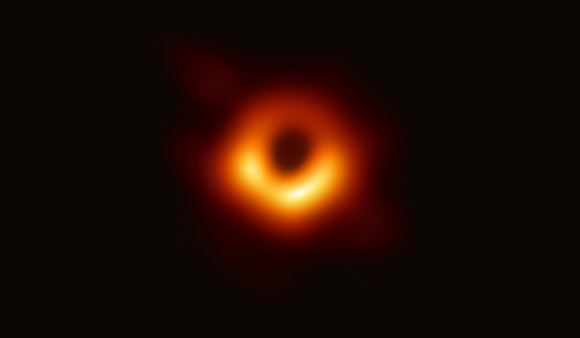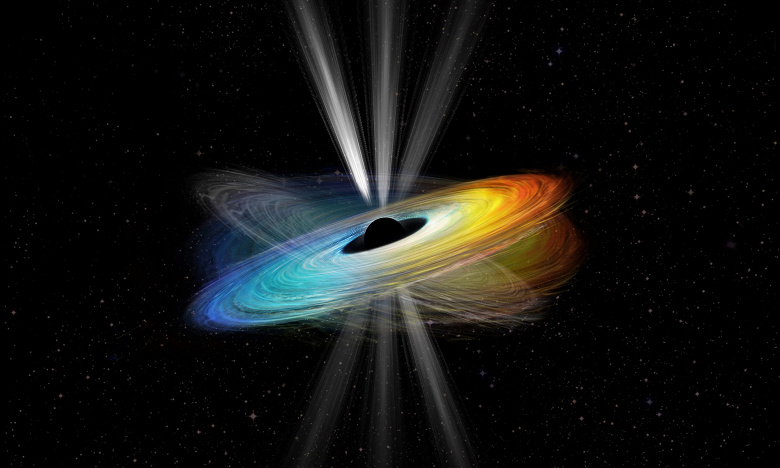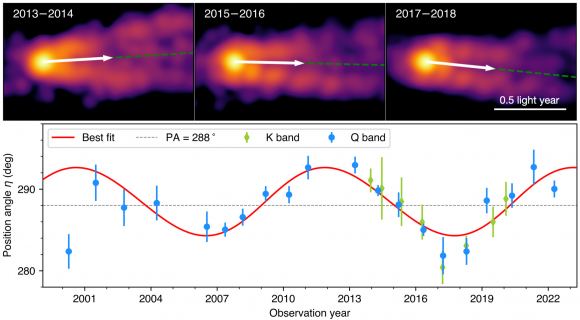55 million light-years away in the M87 galaxy lies a supermassive black hole. This active black hole, with a mass of 6.5 billion suns, became the first black hole to be imaged in 2019.
The image, created by the Event Horizon Telescope (EHT), shows a halo of light distorted by the black hole’s gravity and directed towards us. On one side, the halo is brighter, which, according to general relativity, is associated with the rotation, or spin, of the black hole. This was the first direct confirmation of the rotation of a black hole. A new study published in the journal Nature provided further evidence of rotation.

It’s not a surprising scientific fact that M87 rotates. All objects, from stars to planets, rotate, so astronomers expect that all black holes rotate too. The test was to prove this fact.
Because black holes have no surface features, the only way to determine their spin is to study their bending effect on space and time, and its effect on surrounding light, gas, and dust. The EHT observations helped scientists once again confirm the validity of Einstein’s general theory of relativity. However, the research team decided to look for some evidence of rotation that did not rely on this assumption.

New Study Confirms Rotation of M87 Black Hole
The new study was based on the precession effect. Because M87’s black hole is active, it shoots out jets of material at nearly the speed of light. If the black hole is precessing, then the direction of these jets should change over time. It is on tracking these changes that scientists have focused.
The team analyzed more than 17 years of accumulated data on the black hole’s jets and found that the orientation of the jets changed slightly over time. It oscillates (fluctuates) with a difference of about 10 degrees with a periodicity of 8–10 years. This means that the black hole’s rotation axis precesses within this angle. Since precession is a direct effect of rotation, this confirms the rotation of the black hole.

Although the team confirmed the rotation, the study raises questions about exactly what mechanism causes the black hole to process. Objects that are small relative to the black hole process because they experience gravitational influence from another massive one. However, the M87 black hole is the most massive object in the galaxy, with no other object of similar mass close to it. The answer to the causes of precession may be related to the Lens-Thirring effect: in general relativity, a rotating object bends spacetime around itself, meaning that anything in orbit around that object can have a distorted orbit. For bodies such as the Earth, this effect is extremely insignificant. For black holes, the Lens-Thirring effect can be visible. Perhaps this is what causes the slight tilt of the accretion disk of matter, surrounding the black hole, and when material is consumed by the black hole, it is this material that exerts a slight torque on the black hole, causing it to precess. If this is true, then the jets of many other supermassive black holes should exhibit a similar effect.
One of the most valuable results of the study is that it provides scientists with reliable data on the dynamic behavior of a black hole. It is no longer necessary to rely solely on computational models to understand the interaction of black holes with their environment. Now scientists can compare models with data, which will help to better understand the physics of not only black holes but also the galaxies in which they reside.




